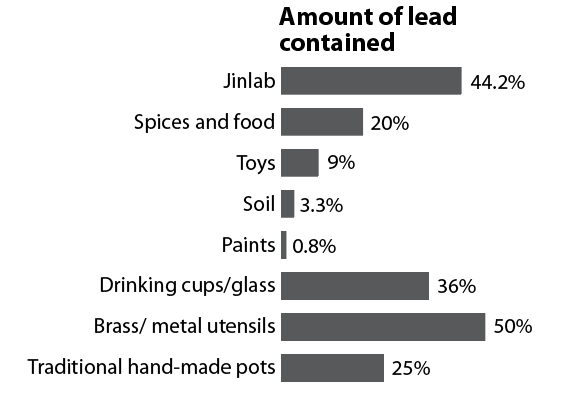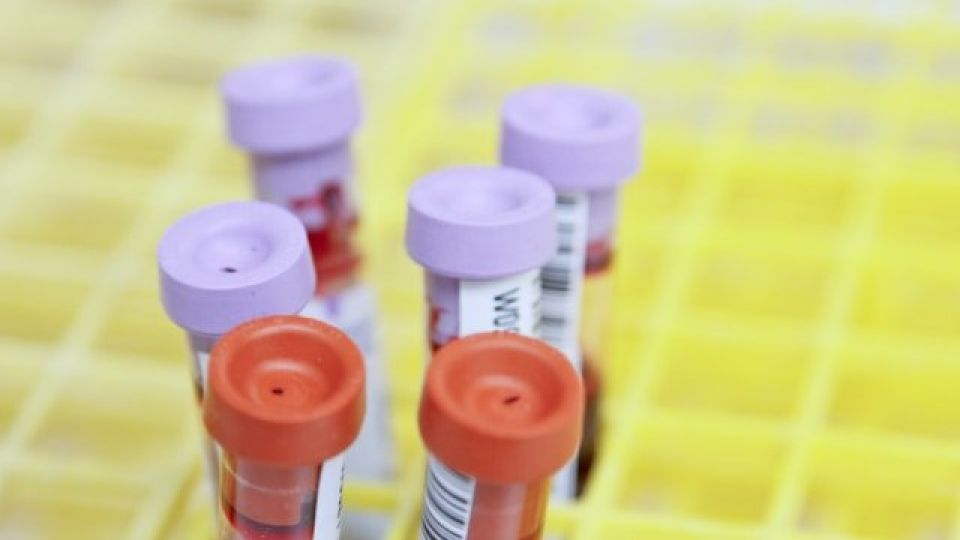February 18, 2025
THIMPHU – The Ministry of Health is taking a multi-pronged approach to reduce lead exposure in the country, following a national blood Lead Level Survey that revealed high levels of lead in jinlab (traditional religious pills) spices, and kitchen items, among others.
According to the survey, 44.2 percent of jinlab samples exceeded the safety threshold for lead.
From 767 jinlab samples, each tested thrice, about 44.3 percent contained lead above the detection limit while 44.2 percent exceeded the safety threshold of 2.5 parts per million (ppm).
One sample registered an alarmingly high concentration of 5.7 percent (57,233 ppm).
The reference threshold for consumables, such as jinlab and spices, was set at 2.5 ppm.

VISUAL: KUENSEL
Health officials suspect lead contamination in jinlab originates from certain ingredients used in its preparation, as well as from brass and aluminium containers used in the mixing and fermentation process. Further studies are underway to pinpoint the exact sources.
Samples were collected in lead-free bags from households and tested in Thimphu after the survey.
Officials found that the highly contaminated jinlab sample contained lead tetroxide (red lead), a toxic substance commonly used in batteries, paint, and glass. The maker was instructed to discontinue its use, and follow-up testing confirmed a reduction in lead levels.
“After consulting with some lamas, they were willing to remove lead-containing ingredients from jinlab, acknowledging the associated health risks,” the official said.
The survey also examined blood lead levels in children, revealing a strong link to jinlab consumption. Among children who had taken jinlab within 15 days of testing, 84 percent had blood lead levels at or above 3.5 micrograms per decilitre. The figure dropped to 74 percent for those who had last consumed jinlab four to six months prior. Children who had never consumed it had the lowest lead levels, at 72.1 percent.
The study highlighted the potential danger of jinlab consumption, as it is often taken on an empty stomach, unlike spices which are mixed with food, allowing for competitive absorption and potentially less lead absorption.
The study also detected lead in everyday household items. Lead exceeded safety thresholds in 21.5 percent of kitchenware, 9.1 percent of toys, 3.3 percent of soil samples, and 0.8 percent of tested paints.
Traditional Bhutanese and religious objects had particularly high contamination rates—75.2 percent contained lead, as did 47.2 percent of general household items.
The health ministry is rolling out a series of initiatives to reduce lead exposure in the country.
In March, health workers nationwide will be trained to advise the public on avoiding lead exposure and responding to potential poisoning cases.
A new educational module is being developed for health workers to engage with caregivers, schools, and Early Childhood Care and Development centres. A large-scale public awareness campaign will be launched in April, targeting local governments and communities.
In addition, the ministry is developing a standardised training curriculum for pre-service health workers, soon to be integrated into the Khesar Gyalpo University of Medical Sciences of Bhutan.
Two toxicologists from the Royal Centre for Disease Control are undergoing specialised training in heavy metal detection, which will improve the country’s ability to test for lead and other toxic substances.
A multi-stakeholder task force is also being formed to coordinate a national response, with potential members including the Department of Trade, the Competition and Consumer Affairs Authority, Revenue and Customs, the Bhutan Food and Drug Authority, local governments, and the private sector.
Health officials said visually identical products may have different lead content. For example, while testing revealed that 44 percent of jinlab samples contained lead, a substantial 56 percent were lead-free. Similarly, aluminium kitchenware was found to contain lead in 25 percent of samples, while 50 percent of brass or metal utensils were contaminated.
Recognising the need for systemic change, the government is laying the groundwork for stronger health services, improved testing capacity, and workforce development.
Starting next fiscal year, the ministry plans to introduce new regulations in collaboration with relevant agencies, followed by stricter surveillance and monitoring. The immediate priority is to build a robust system capable of responding to the risks posed by lead exposure.


